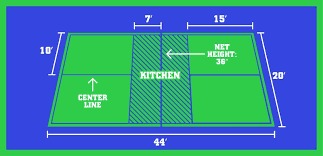
France is a developed country with more than 67 million people. It is located at the western edge of Europe and is considered a key European state for all the right reasons. The French economy has implemented the free-economy model and privatized almost all the major institutions. French is the official language of France and also the medium of education. Moreover, France has always prioritized quality education. French preferences for quality education reflect the 21% share of education from the annual budget. For English-speaking families, navigating the educational infrastructure of France can be a challenging task. This short read is aimed to provide essential information related to the educational infrastructure of France and the role of professional French translation services in the seamless process of enrollment in French educational institutions.
Standardized Education System of France
It is important to mention the change in the French educational infrastructure before and after the French Revolution. Before the revolution, the educational infrastructure was controlled by the Catholic Church. Post-revolution changes brought forth the centralized and standardized educational infrastructure across the nation. This includes the administrative division of France into 31 educational parts called academies and each division is managed by an administrator who is appointed by the Ministry of Education.
That representative is responsible for the educational policies, growth, and resolving all the issues of the specific region. This is not all, each of these 31 academies is further divided into further départements, and these departments are further managed by an inspecteur académie. The key responsibilities of the inspector include primary and secondary education-related matters. Under the law of 1989, the French Ministry of Education proposed the required goals and standards for educational levels (levels are mentioned below) and each primary and secondary school has the autonomy to choose the curriculum to meet the proposed goals of the Ministry of Education. Below is the French School System with sub-standards and age limits for each standard.
| Level | Age Limit |
| Primary School (École élémentaire) | 6-11 Years OldDuration (5 Years)Key Stages:CP (Cours Préparatoire): 6-7 years oldCE1 (Cours Elémentaire 1): 7-8 years oldCE2 (Cours Elémentaire 2): 8-9 years oldCM1 (Cours Moyen 1): 9-10 years oldCM2 (Cours Moyen 2): 10-11 years old |
| Middle School (Collège) | 11-15 Years OldDuration (4 Years)Key StagesSixièmeCinquièmeQuatrièmeTroisième |
| High School (Lycée) | 15-18 Years OldDuration (3 Years)Key StagesSecondePremièreTerminale |
Educational Supremacy of France and English-Speaking Population
Since French is the official language of the country, English to French translation is a key part of the educational infrastructure. To facilitate the English-speaking population (57%) and enable them to be an active part of the French educational infrastructure, French translation services play a bridging part. France has a 99% literacy rate, resulting from sheer determination and consistent educational policies. The French supremacy in education goes back centuries. France has one of the oldest universities, The University of Paris, inaugurated in 1215. However, these are the contemporary popular Universities of France:
- Essec Business School
- INSEAD France
- HEC Paris
- Paris Nanterre University
- EDHEC Business School
- Grenoble Graduate School of Business
- Ecole Polytechnique
- ESCP Europe Business School
- Sorbonne University
Overview of the French Education System
| Features | Information |
| System Overview | 2.5 million StudentsInclusive and Diverse EducationModern Study Programs |
| University Types | Public Universities Private Universities |
| Degree Types | UndergraduateGraduateDoctoral (PhD) |
| Tuition Fee | Varied according to the InstitutionAverage Public Bachelor: EUR 170/YearAverage Public Engineering Bachelor: EUR 620/YearAverage Public Medical Bachelor: EUR 450/YearAverage Pubic Masters: EUR 260/YearAverage Private Masters: EUR 396/Year |
French Schooling Options For English Speakers
In France, high schools are called lycees, and host students ranging from the ages of 15 and 18. French high schools have two key categories:
General Lycee
- Accommodate and prepare students for higher education and then university education by enabling them to pass the Baccalauréat exam.
Technical Lycee
- Technical or vocational Lycees offer education and training for specific professions.
These are the French schooling options for the English speaking families:
International / Bilingual Schools
France is one of the leading developed nations and has an inclusive educational policy and curriculum. France is home to dozens of bilingual schools built especially to accommodate English-speaking students.
Public Schools of France
French public schools offer high-quality education mostly free or equal to the minimum tuition fee. Those English-speaking families who choose to enroll their children in French public schools aim to make them an active part of French culture.
Private Schools of France
Private schools in France work parallel with public schools. They offer both religious and secular educational experiences. These institutes charge fees, and the ratio of tuition fees may vary according to the institute.
Documents Required for Enrollment in the French Schools
These documents are required by French institutions to complete the enrollment process. To ensure the seamless enrolment process, it is recommended to acquire French document translation services. Below are the key required documents:
- Residential Evidence
- Certificate of Birth
- Record of Vaccination
- Previous Educational Credentials
If you have these documents in English, you need to find translation services English to French.
Takeaways
Building a basic familiarity with the French education system is a prerequisite for all native English-speaking populations. This short read is aimed at empowering you to make informed decisions about navigating the French educational landscape, types of educational programs, fee structures, and types of institutions.





